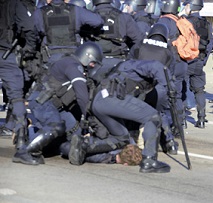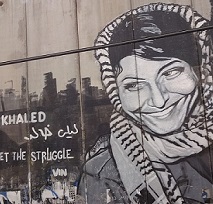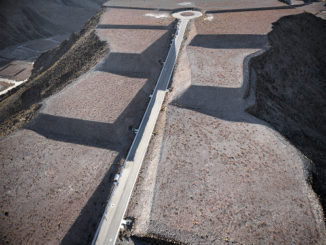
Beyond Darren Wilson: Challenges to the System Starting in Ferguson and St. Louis
After the grand jury announced that Wilson would not be indicted, challenges to prevailing systems of justice have been launched from activists across the country.

After the grand jury announced that Wilson would not be indicted, challenges to prevailing systems of justice have been launched from activists across the country.

When news reports alleged that the two cousins behind the Jerusalem synagogue attack on November 18 were affiliated with the Popular Front for the Liberation of Palestine, a level of confusion reigned. Why the PFLP? Why now?

Source: The Nation
Where, outside of a marginalized left, are today’s equivalent of the antebellum radical Republicans, “ready and willing to destroy” the coercive deportation regime? Where are the absolutists, who would brook no compromise, who would rather see the republic ripped apart than tolerate an immigration system that denies equal rights to millions upon millions of people; that brutalizes families, generates thousands upon thousands of desert deaths, and breeds sexual terror, be it on the journey here, in the factory and field, or in the closed quarters of the home, where women workers have limited protections and where fear trumps whatever slim recourse to the law they might have (that is, when the law itself isn’t the rapist)? Where is the equal of William Lloyd Garrison, capable of both analytically dissecting and morally condemning public policy that compels migration (through trade policies like NAFTA and CAFTA) and then denies the humanity of the migrants once they get here; a regime that relies on a carceral, militarized state for its perpetuation? In the 1840s, radical constitutionalists like Alvan Stewart cut through procedural objections against executive action by arguing that the principle of universal equality is found in the common law of the United States and in the due-process clause of the Constitution. Where are those legal insurgents today insisting that forcing millions of people to live like serfs enthralled to their lord-employers is illegal? That the constitution doesn’t just authorize Barack Obama to limit some deportations—it authorizes him to strike the whole damn regime down. Who are today’s dissenting intellectuals with the comparable influence of Ralph Waldo Emerson, who after the passing of the 1850 Fugitive Slave Act urged collective resistance against the law?

Source: Tom Dispatch
“Oh my God, I’m in hell,” I cried out when the car that had rolled for hours through the luscious darkness of the Mojave night came to a jolting stop at a traffic light on Las Vegas Boulevard, right by the giant oscillating fuchsia flowers of the Tropicana. Back then, in the late 1980s, the Strip was the lasciviously long neon tongue a modest-sized city unfurled into the desert. Behind the casinos lining Las Vegas Boulevard was the desert itself — pale, flat, stony ground with creosote bushes here and there, a vast expanse of darkness, silence, and spaciousness pressing in on the riotousness from all directions.
Copyright Toward Freedom 2019